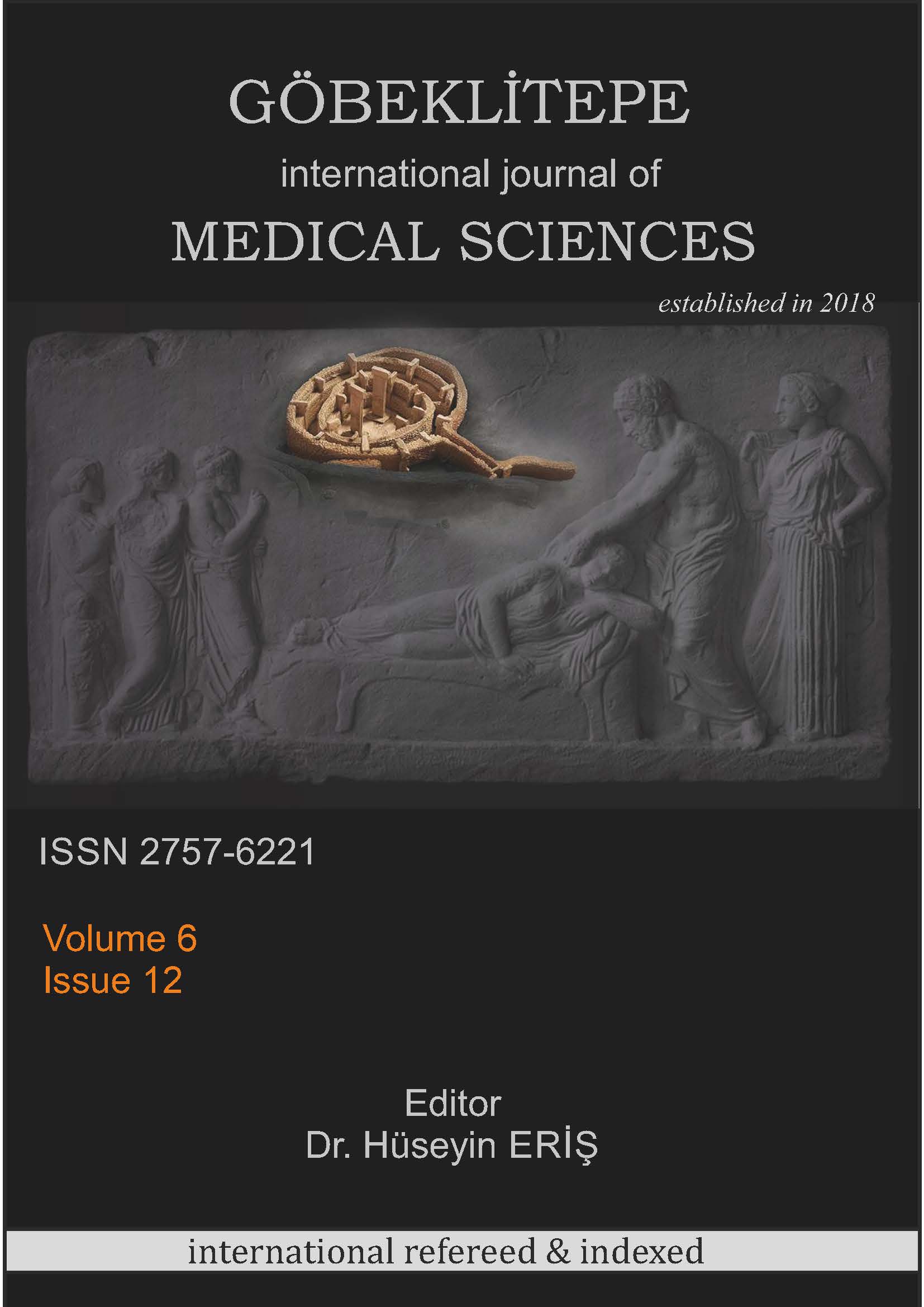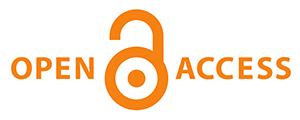EXAMINATION OF FIRST AID AWARENESS OF INDIVIDUALS BEFORE AND AFTER FIRST AID TRAINING
DOI:
https://doi.org/10.55433/gsbd/197Keywords:
First aid, emergency, training, awarenessAbstract
In this study, it was aimed to determine the first aid awareness of individuals and whether the trainings provided by first aid training centers cause a significant change in the first aid differences of individuals. This descriptive cross-sectional study was conducted at 4 different first aid training centers operating in Ankara, Türkiye. The study was conducted with 122 respondents and the participation rate was 96.8%. A questionnaire was used as the data collection method in the study. The research data were analyzed and evaluated in SPSS 23.0 program. The range of age of the participants was 20-47 years and the mean age was 27.8±6.6 years. 61.5% of the participants were female and 68.8% were married. It was determined that the participants scored (2.10±1.1) points in the pre-test and (3.49±1.4) points in the post-test and the difference between these two scores was significant (t=-6.65, p<0.001). There is a difference between groups in terms of first aid awareness according to age, gender and level of education (p<0.05). It was determined that the first aid awareness of the participants was at a low level and reached a high level after the first aid training. It is considered that providing first aid trainings at regular intervals to cover all groups of the society will increase the first aid awareness.
References
Yetis, G. & Gurbuz, P. (2018). Determination of first aid knowledge levels vocational school of health services student. Journal of Inonu University Health Services Vocational School, 6(2),64-76.
Yagci, A. (2021). Analysis of first aid course in private security and protection programs in higher education institutions. IJOTEM, 4(2),58-76.
Singletary, E.M., Zideman, D.A., Bendall, J.C., Berry, D.C., Borra, V., Carlson, J.N. (2020). 2020 International Consensus on first aid science with treatment recommendations. Circulation, 142(16_suppl_1),S284-S334.
Kus, G. (2018). Information and ability level of capability of people after natural diseasters: what can we do?. Eskişehir Technical University Journal of Science and Technology B- Theoritical Sciences, 6, 204-210.
International Labour Organization (ILO). World statistic. https://www.ilo.org/moscow/areas-of-work/occupational-safety-and-health/WCMS_249278/lang--en/index.htm. 25 Feb, 2023.
World Health Organization (WHO). Road traffic injuries, 2022. https://www.who.int/news-room/fact-sheets/detail/road-traffic-injuries. 25 Feb, 2023.
Karaca, A., & Kose, S. (2020). The effect of knowledge levels of individuals receiving basic first aid training in Turkey on the applications of first aid. Niger J Clin Pract, 23(10),1449-1455.
Kocali, K. (2021). Standardization of between 2012-2020 years work accidents indicators of social security institution. Journal of Academic Approaches, 12(2), 302-327.
Turkish Statistical Institute. Road Traffic Accident Statistics, 2021. https://data.tuik.gov.tr/Bulten/Index?p=Karayolu-Trafik-Kaza-Istatistikleri-2021-45658. 27 Feb 2023.
Ministry of Health, Türkiye. First Aid Regulations (Date: 29.07.2015, No: 29429). http://www.resmigazete.gov.tr/eskiler/2015/07/20150729-2.htm. 01 March, 2023.
Tosun, A., Yuksel, A., Uckun, C.G., & Demir, B. (2019). Investigation of first aid awareness of vocational school students in terms of some variables. Journal of Social and Humanities Sciences Research, 6(42), 2869-2874.
Ercan, O., & Ozbek, O. (2017). Sports sponsorship for communication companies reliability and validity study of measurement. Journal of Human Sciences, 14(4),3615-3625.
O’Connor, S., Comerford, E., Moran, K., Whyte, E., Lacey, P., & Concannon, A. (2023). Irish primary school teachers’ experiences, training and knowledge in first aid. Irish Educational Studies, 03323315.2023.2174568.
Yu, Y.C., & Liang, J.C. (2021). Relationships among affect, hardiness and self-efficacy in first aid provision by airline cabin crew. Int J Environ Res Public Health,18(4),2108.
Taniguchi, T., Sato, K., Fujita, T., Okajima, M., & Takamura, M. (2012). Attitudes to bystander cardiopulmonary resuscitation in Japan in 2010. Circ J, 76(5),1130-1135.
Temel, E., Sahin, B., Gezer, N., & Cam, R. (2018). Level of knowledge of university students on basic first aid practices. Journal of Nursing Science, 1(3), 34-38.
Usta, G., Kucuk, U., & Torpus, K. (2017). An investigation into vocational school students’ first aid knowledge and attitudes. Journal of Pre-Hospital, 2(2),67-77.
Buyukkayaci Duman, N., Kocak, C., & Sozen, C. (2013). First aid knowledge levels of university students and the factors affecting these levels. Hitit University Journal of Social Sciences Institute, 6(1), 57-70.
Cakallioglu, E., Aktas, M., Gungor, Y., Duran, E., & Gecici, I. (2021). Investigation of first aid knowledge levels of school bus drivers. Journal of Social and Humanities Sciences Research, 8(78), 3369-3390.
Sonmez, Y., Uskun, E., & Pehlivan, A. (2014). Knowledge levels of pre-school teachers related with basic first-aid practices, Isparta sample. Turk Pediatri Ars, 49(3),238-246.
Koksoy, S., Oncu, E., Sermet, S., & Sungur, M.A. (2012). First aid knowledge levels of prison inmates. Tr J Emerg Med, 12(1), 20-24.
Elmas, E.G., Durna, Z., & Akin, S. (2020). Assessment of knowledge and attitudes of mothers with children about first aid practices for home accidents and security precautions. JAREN, 6(2), 267-279.
Eldosoky, R.S. (2012). Home-related injuries among children: knowledge, attitudes and practice about first aid among rural mothers. East Mediterr Health J, 18(10), 1021-1027.
Bennett, C.V., Maguire, S., Nuttall, D., Lindberg, D.M., Moulton, S., Bajaj, L. (2019). First aid for children's burns in the US and UK: An urgent call to establish and promote international standards. Burns, 45(2),440-449.
Chandan, J.S., & Meakin, R. (2016). Do special constables in London feel that they are adequately prepared to meet their first aid responsibilities? A qualitative study. BMJ Open, 6(1), e010082.
Alomar, M., Rouqi, F.A., & Eldali, A. (2016). Knowledge, attitude, and belief regarding burn first aid among caregivers attending pediatric emergency medicine departments. Burns, 42(4), 938-943.
Kurtgoz, A., & Incedal Sonkaya, Z. (2021). The evaluation of approach training on foreign body aspirations in children given to kindergarten teachers. GUJHS, 10(4), 893-901.
Bayraktar, N., Celik Senol, S.,Unlu, H., & Bulut, H. (2009). Evaluating the effectiveness of a first aid training course on drivers. Hacettepe University Faculty of Health Sciences Nursing Journal, 16(1),47-58.
Karamustafa, M., Binici, C.M., & Celebi, U.B. (2021). The quality of first aid training given with in the scope of first aid regulations and the measurement of effect on employees. OHS Academy, 4(2),13-20.
Dogar, A., Tozoglu, E., & Sam, C.T. (2021). Investigation of the first aid principles and awareness levels of officers who work in Erzurum provincial gendarmerie command. International Social Mentality and Researcher Thinkers Journal, 7(42), 371-376.
Abo Elsoud, M.A., Ahmed, H.A., Ahmed, A.M.A., & Frag, H.K. (2018). Assessment knowledge of primary schools teachers about first aid at Ismailia City. IOSR Journal of Nursing and Health Science, 7, 79-85.
Hosapatna, M., Bhat, N., Belle, J., Priyadarshini, S., & Ankolekar, V.H. (2021). Knowledge and training of primary school teachers in first aid - a questionnaire based study. Kurume Med J, 66(2),101-106.
Al Gharsan, M., & Alarfaj, I. (2019). Knowledge and practice of secondary school teachers about first aid. J Family Med Prim Care,8(5),1587-1593.
Bas, K., Kozyel, M., Demirci, A., & Caliskan, C. (2021). First aid knowledge levels of employees in a hunting rife factory. Emerg Aid Disaster Science, 1(1),11-16.
Midani, O., Tillawi, T., Saqer, A., Hammami, M.B., Taifour, H., & Mohammad, H.(2019). Knowledge and attitude toward first aid: A cross-sectional study in the United Arab Emirates. Avicenna J Med, 9(1), 1-7.
Diango, K., Yangongo, J., Sistenich, V., Mafuta, E., & Wallis, L. (2022). Awareness, attitude and perceived knowledge regarding first aid in Kinshasa, Democratic Republic of Congo: A cross-sectional household survey. Afr J Emerg Med, 12(2),135-140.
Uzuntarla, Y. (2016). Comparison of young age group’s thoughts and knowledge levels on organ donation in terms of education given. Turkish J Nephrol, 25, 296-301.
Nayir, T., Uskun, E., Turkoglu, H., Uzun, E., Ozturk, M., & Kisioglu, A.N. (2011). The firstaid knowledge levels and attitude of the teachers who work in Isparta city center. SDU Tip Fak Derg,18(4),123-127.
Aktas, B., Bas, E., Atsal, B., Dogan, Z., & Guzel, H. (2020). The effect of basic first aid training given the secondary school students on the knowledge level. Saglik ve Toplum, 20(1), 98-103.
Dolenc, E., Slabe, D., & Kovačič, U. (2021). The needs and opportunities of older laypeople to acquire first aid skills. PLoS One, 16(10), e0255964.
Downloads
Published
Versions
- 2024-07-02 (2)
- 2023-06-27 (1)
How to Cite
Issue
Section
License
Copyright (c) 2023 Göbeklitepe Sağlık Bilimleri Dergisi

This work is licensed under a Creative Commons Attribution 4.0 International License.




